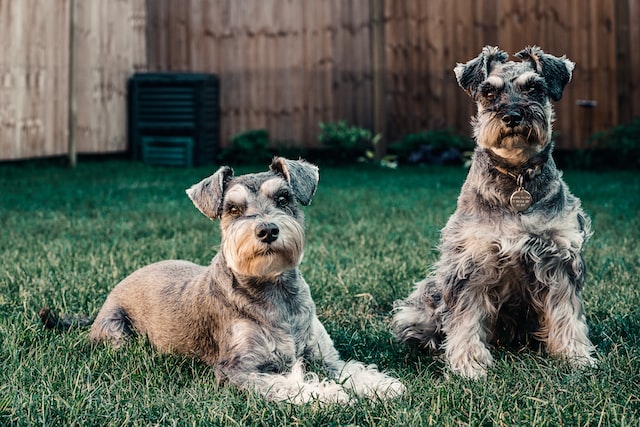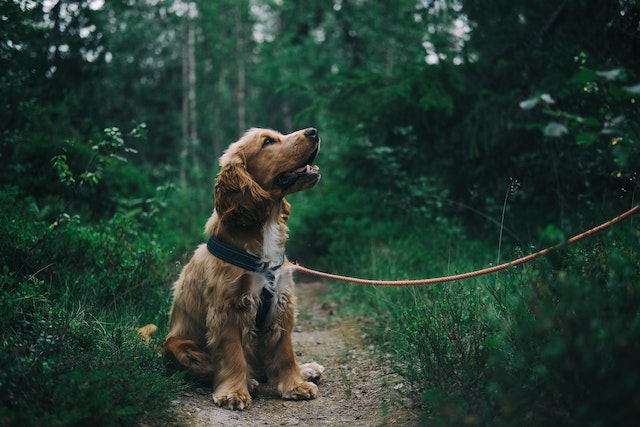The Miniature Schnauzer
The Miniature Schnauzer is one of the best dogs you can get if you’re living alone. The Miniature Schnauzers are known to develop a special relationship with one family member as compared to the rest. They do make great family dogs as well, but if you’re on your own and seeking a canine companion, you might be convinced with this breed of Schnauzers.
Excellent around children, Miniature Schnauzers take their time adapting to a new pet. The ideal thing to do is to raise them and the puppies together.

Temperament and Training
Their energetic disposition can put them in play mode in an instant. A daily walk is a must and if you have an enclosed fencing, then it’s safe enough to leave the Miniature Schnauzers to run around within the enclosure. They need outlets to expend their energy, else they’ll cry havoc at home.
Miniature Schnauzers are easy to train. Their inherent need to please you will make it easy to teach them a few commands. They need to be trained with very clear commands especially when it comes to other pets and people. Miniature Schnauzers are known to be excellent watchdogs. Immediately sensing an intruder, they sound the alarm and until the owner assures them that the stranger poses no threat, they will continue to be on-guard. The Miniature Schnauzer’s bark gives the illusion of coming from a bigger dog. Once the threat of a stranger is eliminated, they are quite happy to go and make friends since the Schnauzers are a polite breed.
Appearance
The Miniature Schnauzer is a small but sturdy dog and the distinctive beard and bushy brows give it a grumpy but funny appearance. It has a thick, wiry coat that can be black, black and silver or salt and pepper and because the hair tends to get trapped in the coat, the Miniature Schnauzer doesn’t shed much. Therefore, he’s a generally very clean dog and is hypoallergenic.
An adult Miniature Schnauzer grows about 14 inches tall and weight between 11 and 20 pounds.
Care & Health
- Major concerns: urolithiasis, PRA
- Minor concerns: follicular dermatitis, esophageal achalasia, vWD
- Occasionally seen: pulmonic stenosis, Legg-Perthes, cataract
- Suggested tests: eye, DNA test for vWD, (cardiac)
- Lifespan: 14 – 15 years
- Grooming: their coat needs brushing two to three times per week. Clean the ears with a cotton ball on a regular basis. Brush the teeth on a weekly basis. Trim nails monthly.
History
The Miniature Schnauzer gets its name from the German word for muzzle, ‘schnauze’. The Miniature Schnauzer was a result of breeding the standard Schnauzer with smaller breeds such as the Affenpinscher, the Miniature Pinscher, and the Poodle. Originally bred to hunt vermin and guard small flock, they were not recognized as a separate breed till 1899.
Introduced to the United States in 1925, the Miniature Schnauzers were admitted to the AKC in the year 1926. It was the third most popular breed in the country, just after World War II. As of 2007, the Miniature Schnauzer’s popularity stood 11th out of 157 breeds.
The English Toy Cocker Spaniel

If you’re looking for a family dog with the perfect combination of low energy and excellent around children, the English Toy Cocker Spaniel is the right fit. They love nothing more than being your constant companion and cuddling up near you. These Cocker Spaniels are known to be gentle dogs, which does not go in their favour of being a good watchdogs; they don’t bark very often, simply because they are shy! If they feel threatened or over-whelmed, they might bite; to avoid this, you might want to get them into the habit of having people outside of their family around them.
These Miniature Cocker Spaniels are very eager to please their family, which makes them easy to train. There might be some stubbornness you might encounter, but if you deal with it with a gentle hand, they’ll work harder to please you and love you more. If you want to keep two pets, one of them could be this Toy Cocker Spaniel since they get along with other dogs and house pets. Although they are low energy dogs they do require a daily walk and the occasional run in the backyard. They could chase smaller animals and birds when outdoors, so do put them on a leash!
Care & Health:
- Major concerns: patellar luxation
- Minor concerns: early tooth loss, “lazy” tongue (never fully extracts into mouth)
- Occasionally seen: PDA
- Suggested tests: knee
- Life span: 10 – 12 years
- Grooming: The Toy Spaniel’s long coat requires a brushing twice a week to avoid any tangling; if you want to reduce the shedding all over the house.
Note: The English Toy Spaniels often have a soft spot in the skull (due to incomplete fontanel closure). In addition, the breed is sensitive to anesthesia.
History:
The English Toy Spaniel has been known to the British right from the Renaissance era, when they were companion dogs for royalty. During those times, they were fondly referred to as “comforter spaniels”, since they were either by the feet or in the laps of royalty. The look of the Spaniel today is a result of the cross breeding between the Pug and the Japanese Chin with the European Spaniels.
Another name for the English Toy Spaniel is the King Charles Spaniel, because of the former’s constant companionship with the King during the 17th century. The English Toy Spaniel was admitted to the AKC in 1886 and as of 2007, their popularity ranks 121st out of 157 breeds.